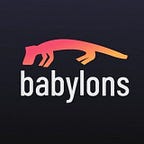Why Ethereum Layer-2 Solutions Matter?
Ethereum, the second-largest blockchain network by market capitalization, has been facing scalability issues since its launch in 2015. The network can currently handle around 15–20 transactions per second (TPS), which is far from sufficient for mass adoption. This is where Ethereum layer-2 solutions come into play. Although the implementation of a proof-of-stake (PoS) consensus mechanism on the Ethereum network is expected to help increase its transaction speed, that isn’t enough for such a big protocol like Ethereum.
Layer-2 solutions are built on top of the Ethereum blockchain and aim to increase the scalability and speed of transactions on the network. These solutions allow for off-chain transactions and computation to take place, reducing the load on the main Ethereum chain and increasing overall throughput.
One of the most popular layer-2 solutions is Plasma. Developed by Ethereum co-founder Vitalik Buterin, Plasma is a framework for building scalable and secure off-chain applications. It utilizes a series of smart contracts to enable off-chain transactions, while still maintaining the security of the main Ethereum chain.
Another popular layer-2 solution is state channels. State channels enable off-chain transactions between two or more parties. These transactions are not recorded on the main Ethereum chain, but the final outcome is recorded on-chain, allowing for increased privacy and reduced costs. An example of a state channel is the lightning network on Bitcoin.
Rollups are another scaling solution that allows for the execution of smart contracts off-chain and the recording of their results on-chain. This allows for increased scalability and lower costs, as fewer data needs to be recorded on the main Ethereum chain. Optimistic Rollup is a variation of rollup that uses the optimistic execution of smart contracts to reduce the cost of on-chain operations.
ZK-Rollups are another scaling solution that uses zero-knowledge proofs to enable private and scalable smart contract execution. With ZK-Rollups, the execution of the smart contract is done off-chain, and the result is verified on-chain using zero-knowledge proof. This allows for increased scalability and privacy.
Another layer-2 solution on Ethereum is xDai, a stablecoin chain that uses its own native token (xDAI) to reduce transaction costs and increase speed. xDai is fully compatible with the Ethereum ecosystem, but transactions on xDai are faster and cheaper than on the main Ethereum chain.
Loopring is a protocol for building decentralized exchanges and other financial applications on Ethereum. It uses zkRollup technology to increase scalability and reduce transaction costs.
Arbitrum and Optimism are also layer-2 protocols on Ethereum. Arbitrum is a Layer-2 scaling solution that uses optimistic roll-up technology to allow decentralized apps (dApps) to run faster and cheaper, it also allows for private and secure smart contract execution. Optimism is also a Layer-2 scaling solution that uses optimistic roll-up technology to allow decentralized apps (dApps) to run faster and cheaper. It also uses a unique approach of “optimistic virtual machine” which allows for faster and cheaper execution of smart contracts.
NFTs on Layer-2 Protocols
Sorare on Polygon: Sorare is a blockchain-based fantasy soccer game that uses NFTs to represent unique player cards. Players can collect, trade, and use the NFTs to play matches on the Polygon network to take advantage of its fast and low-cost transactions.
Mirror on Arbitrum: Mirror is a blockchain-based social network that uses NFTs to represent unique identities and digital collectibles. Users can post, follow, and interact with each other using the NFTs on the Arbitrum network to take advantage of its fast and low-cost transactions.
Decentraland on Optimism: Decentraland is a virtual reality platform that uses NFTs to represent unique virtual plots of land and items. Users can create, explore, and interact with the virtual world using the NFTs on the Optimism network to take advantage of its fast and low-cost transactions.
In conclusion, Ethereum layer-2 solutions are crucial for the long-term success of the Ethereum network. They allow for increased scalability, reduced costs, and improved privacy, all of which are necessary for mass adoption. These solutions, such as Plasma, state channels, rollups, xDai, Loopring, Optimism, and Arbitrum, are constantly being developed and improved upon to provide a better experience for users and developers on the Ethereum network.
References:
Buterin, V. (2018, August 11). Plasma: Scalable Autonomous Smart Contracts. Retrieved from https://plasma.io/
Poon, J., & Dryja, T. (2016). The Bitcoin Lightning Network: Scalable Off-Chain Instant Payments
About Babylons
Babylons is a community-centric NFT ecosystem where users can trade on all EVM-based chains, participate in primary NFT and token sales, launch their own projects and curate their collections. Everything you do on Babylons generates passive income in the form of $BABI, our governance token, as all platform fees are returned to the user base through our List-to-Earn and Trade-to-Earn programs. In addition, Babylons is a Web 3.0 technology solutions provider trusted by over 200 partners. Online since April 2021, Babylons has processed over 20MM USD in marketplace volume and has raised more than 2MM USD in primary sales for its partnered projects.
Website | Twitter | Telegram |Telegram Announcement| Medium | Discord | Instagram | Youtube
